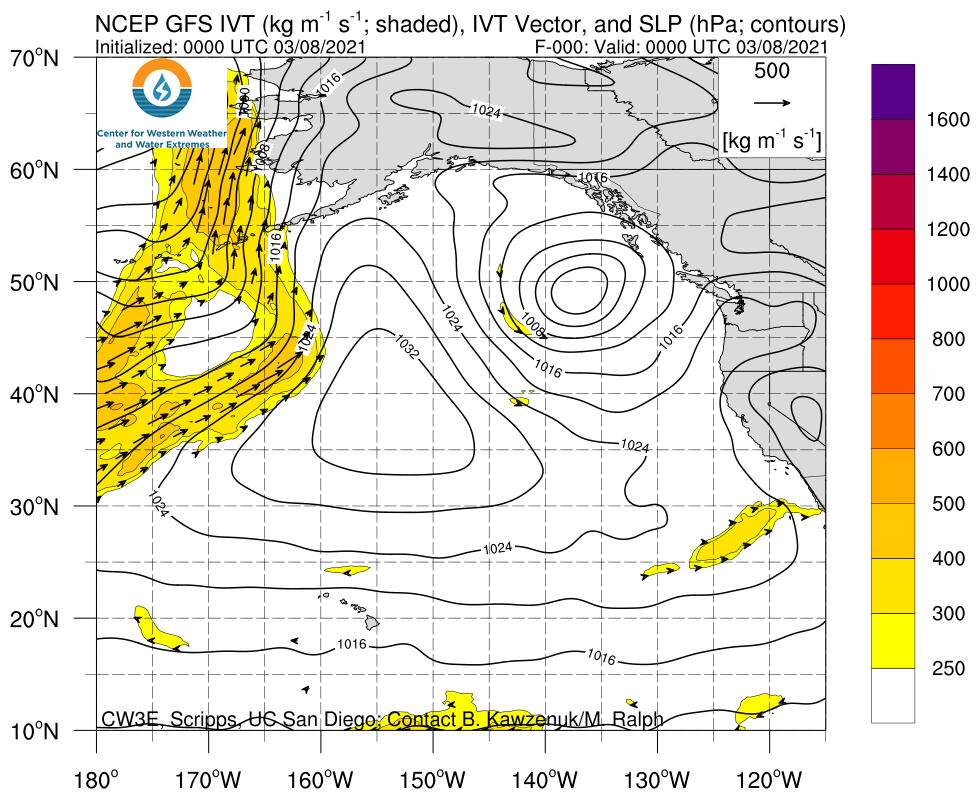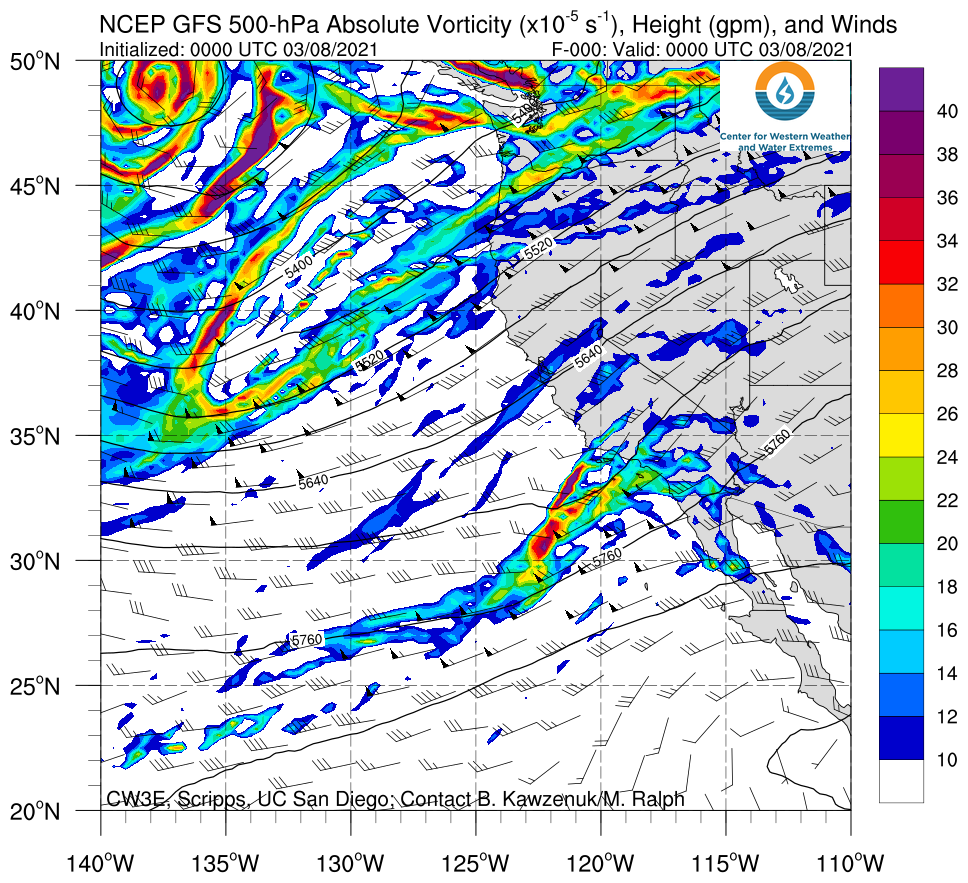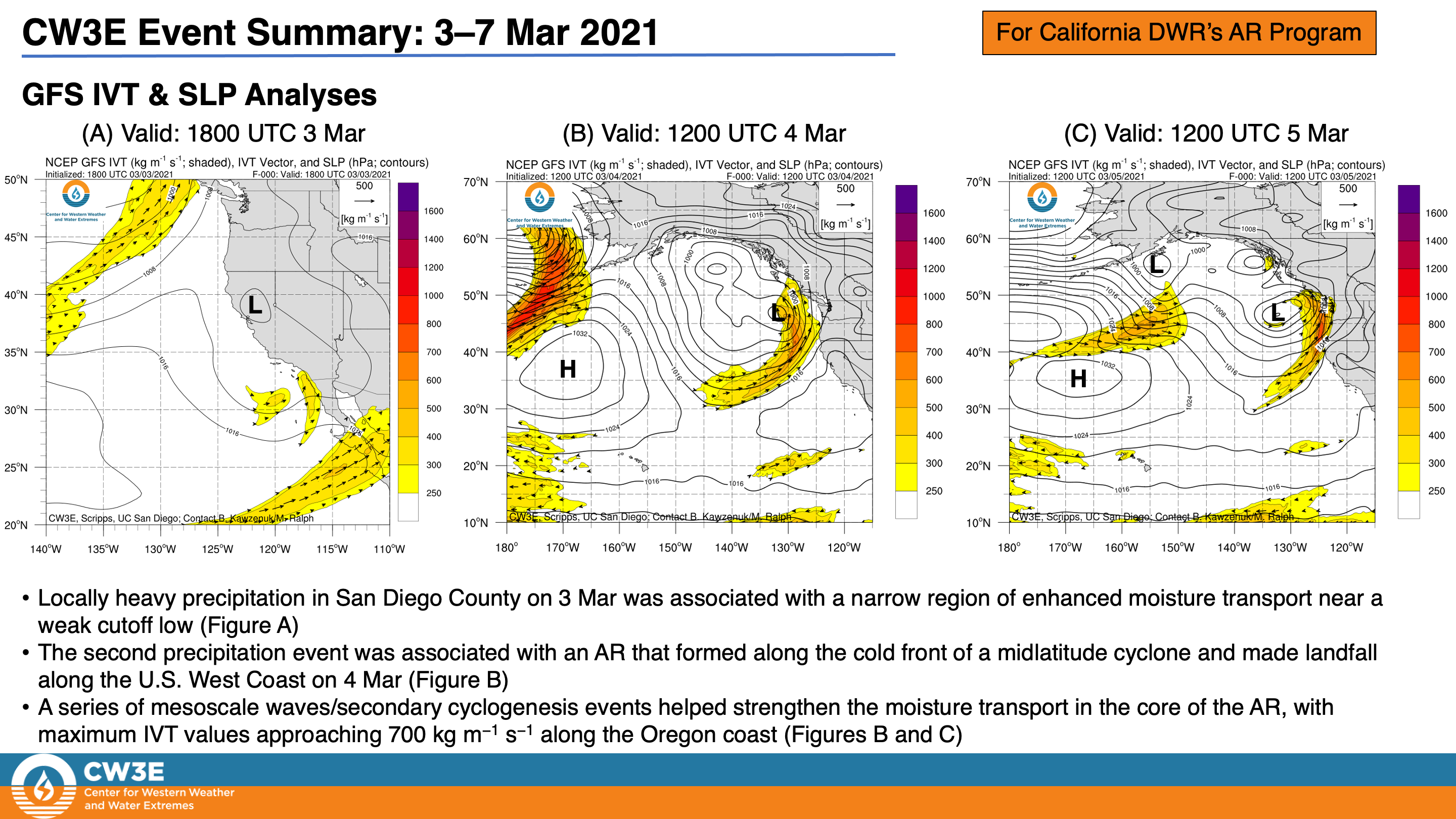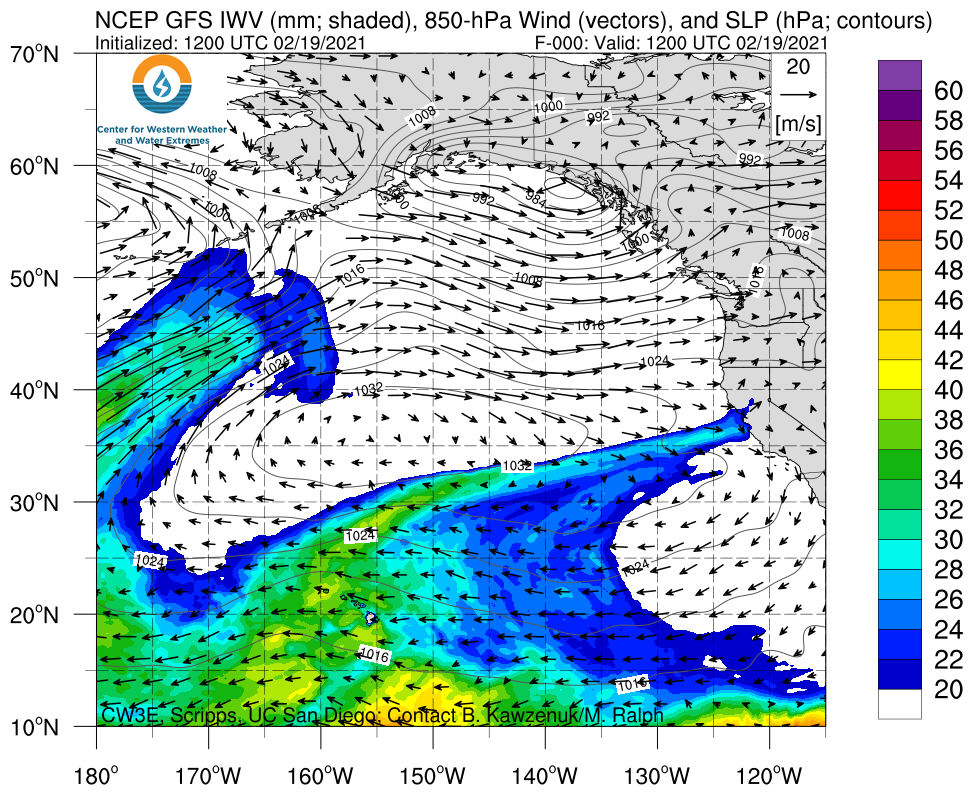CW3E Publication Notice
The Influence of Antecedent Atmospheric River Conditions on Extratropical Cyclogenesis
March 2, 2021
CW3E researcher Zhenhai Zhang and CW3E director F. Martin Ralph published a paper in Monthly Weather Review, titled “The Influence of Antecedent Atmospheric River Conditions on Extratropical Cyclogenesis” (Zhang and Ralph, 2021). As part of CW3E’s 2019-2024 Strategic Plan to support Atmospheric River (AR) Research and Applications, CW3E aims to further the understanding of AR dynamics. This study contributes to the understanding of the relationship between AR and extratropical cyclones (ETC). Specifically, this study quantifies the impacts of an antecedent AR on ETC deepening during the cyclogenesis stage and explores the relevant dynamical and physical processes, especially the role of water vapor inflow from an antecedent AR into a developing ETC.
ARs are recognized as the primary region of strong horizontal water vapor transport typically associated with a low-level jet stream ahead of the ETC cold front. The impacts of ETCs on ARs are widely acknowledged. However, some ETCs begin their development near a pre-existing AR. This study investigates the differences in the cyclogenesis stage between these cyclogenesis events and those that begin without an AR nearby. Well-established ETC and AR detection methods are applied to reanalysis over the North Pacific during the 1979-2009 cool seasons (November-March). Of the 3137 cyclogenesis cases detected, 35% are associated with a nearby AR at the time of initial cyclogenesis. However, in the 448 cyclones that deepen explosively after their initiation, 60% begin with a pre-existing AR nearby. On average, an ETC with an antecedent AR nearby deepens more quickly during the cyclogenesis stage than those without a pre-existing AR.
The roles of both dry and diabatic processes that contribute to cyclogenesis are examined, including low-level baroclinicity, upper-level forcing, water vapor inflow, and latent heating. The results are summarized in a schematic that uses the composite fields from 3137 cyclogenesis cases to compare the cyclogenesis with and without an antecedent AR (Figure 1). ETCs that develop associated with a pre-existing AR receive nearly 80% more water vapor inflow on average, enhancing latent heating and intensifying ETC deepening significantly in the cyclogenesis stage. In contrast, neither low-level baroclinicity nor upper-level potential vorticity exhibit statistically significant differences between cyclogenesis events with and without an antecedent AR. These results imply that when the dry dynamical factors (low-level baroclinicity and upper-level forcing) initialize cyclogenesis, a nearby antecedent AR can provide extra fuel (water vapor inflow) to enhance the diabatic process significantly and intensify ETC deepening during the cyclogenesis stage. Cyclogenesis events associated with an exceptionally strong AR at the ETC initial time deepen even more rapidly, indicating that the intensity of an antecedent AR can modulate the ETC deepening in the cyclogenesis stage.
This study improves the understanding of extratropical cyclogenesis, including rapid cyclogenesis, which elucidates the vital role of antecedent horizontal water vapor transport, as delineated by the existence and intensity of an antecedent AR. These results imply that errors in initial conditions related to ARs can contribute to errors in both AR and ETC predictions. It reinforces the importance of ensuring global weather prediction models are initialized with accurate representations of ARs in their initial conditions, including the unique AR-targeted observations provided by AR Reconnaissance (Ralph et al. 2020).
Figure 1: Fig. 15 from Zhang and Ralph (2021). Schematic summary of the cyclogenesis not associated with an antecedent AR (a, c) and associated with an antecedent AR (b, d) at the time of cyclogenesis (a, b) and 24h after cyclogenesis (c, d). The structures and magnitudes of IVT (gray contour, yellow, orange and red), upper-level PV (300-200 hPa, light blues), upper-level jet (300 hPa, dash and solid blue contours), and SLP (every 2 hPa, black contours) are based on the corresponding composite fields of cyclogenesis cases over the North Pacific in 31 (1979-2009) cool seasons from CFSR. In (a) and (b), the red circle denotes the position of maximum IVT, and the black dot denotes the position of incipient low-pressure center at the time of cyclogenesis. In (c) and (d), the closed SLP contours start from the first closed SLP at the time of cyclogenesis not associated with an antecedent AR (1010 hPa) and associated with an antecedent AR (1006 hPa) respectively.
Zhang, Z., & Ralph, F. M. (2021). The Influence of Antecedent Atmospheric River Conditions on Extratropical Cyclogenesis, Monthly Weather Review, https://doi.org/10.1175/MWR-D-20-0212.1.









































